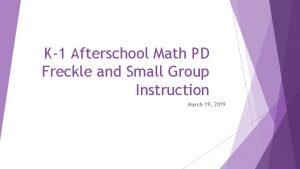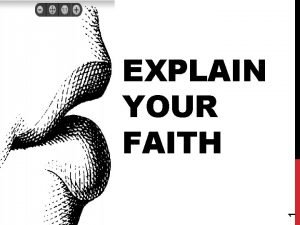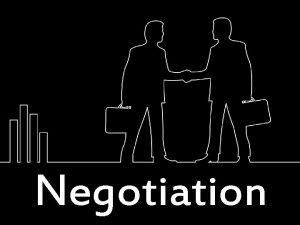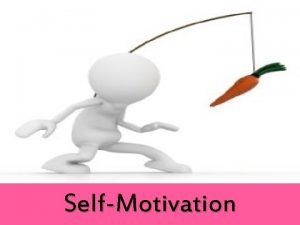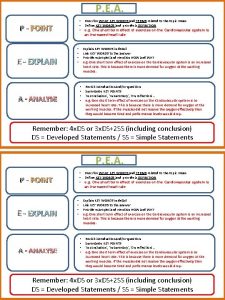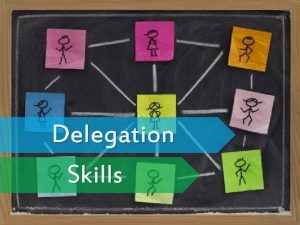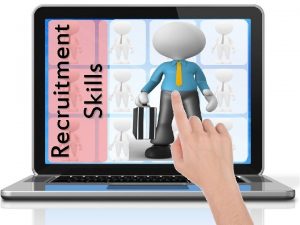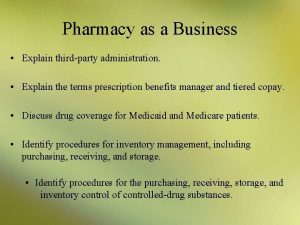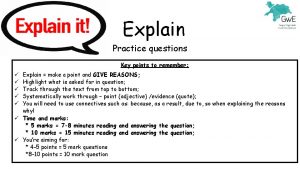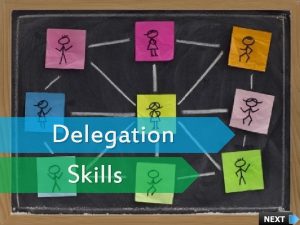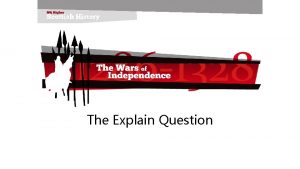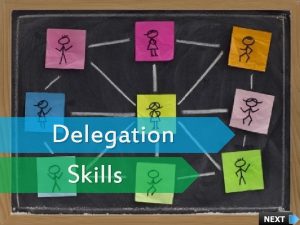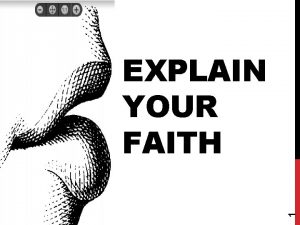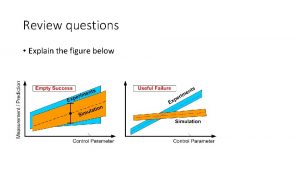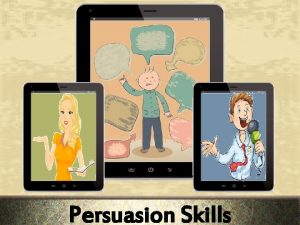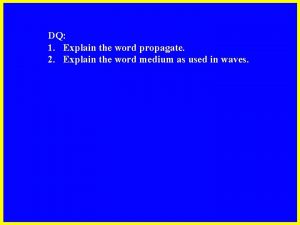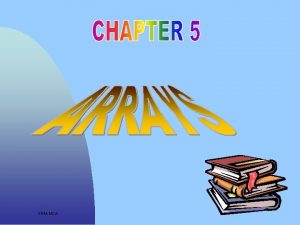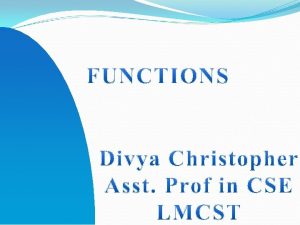SS 6 H 2 The student will explain







































- Slides: 39

SS 6 H 2 The student will explain the development of Latin America and the Caribbean from European colonies to independent nations. c. Explain the Latin American independence movement; include the importance of Toussaint L’Ouverture, Simon Bolivar, and Miguel Hidalgo.

Essential Question How did the independence movements change Latin America?

Conquistadors

Latin America Gains Independence This painting called “Liberators” by Alfredo Zalce shows four important leaders of Latin American independence. The two priests of the left are Father Miguel Hidalgo and Jose de Morelos, two leaders of Mexican independence who were killed in the war against Spain. On their right South American "Liberator" Simon Bolivar shakes hands with Argentinean general Jose de San Martin. The two were responsible for leading South Americans in Spanish colonies to independence.



Conditions before Independence • Latin America was ruled by Spanish and Portuguese


Conditions before Independence • The natives were forced to work as slaves

Conditions before Independence • Many slaves were coming from Africa to Latin America

Conditions before Independence • The conditions for the lower classes were terrible

Simon Bolivar The Father of ________ Summarize the accomplishments of Simon Bolivar. SS 6 H 2 The student will explain the development of Latin America and the Caribbean from European colonies to independent nations. Miguel Hidalgo Toussaint L’Ouverture What did he demand for the peasants? c. Explain the Latin American independence movement; include the importance of Toussaint L’Ouverture, Simon Bolivar, and Miguel Hidalgo. Write a tombstone inscription about his accomplishments. ________- mixed Amerindians and European lower middle class Circle the countries that split from Mexico. ? __________ ___worked in mines and on farms What cause would you be willing to die for?

Social classes Spain • European (Peninsulares). - held all jobs of high power, the most wealthy with the most land

Cre·ole (krē'ōl' Social classes • Creoles- Spanish born in America, wealthy and educated, had good jobs, but not government jobs.

Cre·ole (krē'ōl' Social classes • Mestizos- mixed Amerindians and European lower middle class

Social classes • Native Americans- worked in mines and on farms

Social classes • Freed Blacks- laborers, some in skilled trades

Social classes • Slaves- had some rights, they were the property of the owner and they could buy freedom

Causes of the Revolution • The enlightenment ideas • Creole discontent of being left out of the government and trade • The success of the French and American revolutions • The attacks of Napoleon forced the Spanish and Portuguese to withdraw troops to Spain and Portugal leaving the ability to control the colonies weakened

Causes of Latin American Revolutions Enlightenment Ideas • NATURAL LAWS govern natural science and human society. • Give people rights life, liberty, property! • Challenged theory of “Divine Right” monarchy.

Preoccupation of Spain & Portugal In Fighting Napoleonic Wars

Toussaint L’Ouverture • Self-educated ex-slave who led Haitian revolution against France • 1791 burned sugarcane fields and killed slave owners • He had over 100, 000 followers • 1800 foreign forces driven off of island of Hispaniola.

Toussaint L’Ouverture • Napoleon Bonaparte comes to power & tries to regain Haiti – 1802 sends army – L’Ouverture captured & sent to prison in France. He dies in 1803. – French soldiers dying of yellow fever.

Toussaint L’Ouverture 1804 First independent nation in Latin America

Simon Bolivar The Father of ________ Summarize the accomplishments of Simon Bolivar. SS 6 H 2 The student will explain the development of Latin America and the Caribbean from European colonies to independent nations. Miguel Hidalgo Toussaint L’Ouverture What did he demand for the peasants? c. Explain the Latin American independence movement; include the importance of Toussaint L’Ouverture, Simon Bolivar, and Miguel Hidalgo. Write a tombstone inscription about his accomplishments. ________- mixed Amerindians and European lower middle class Circle the countries that split from Mexico. ? __________ ___worked in mines and on farms What cause would you be willing to die for?

Simon Bolivar “Father of South America” • In 1811 Venezuela Independent • Earthquake of March 26, 1812 • In 1813 Bolivar becomes dictator of Venezuela: – Abolishes Indian tribute and other special privileges – But, refuses to free slaves, made Catholicism state religion, limited full citizenship to those with property • 1814 -1816: Spanish regain Spain- allowed them to reconquer Venezuela • In 1816 with Haitian and English support: – Bolivar regains Venezuela after agreeing to free slaves


Bolivar’s Accomplishment

Bolivar’s Failure Ø After uniting Venezuela, Columbia, & Ecuador into Gran Columbia, he left to help free the rest of Latin America. Ø He died a year later, with his goal of uniting all of South America unfulfilled!

Simon Bolivar “Father of South America”

Simon Bolivar The Father of ________ Summarize the accomplishments of Simon Bolivar. SS 6 H 2 The student will explain the development of Latin America and the Caribbean from European colonies to independent nations. Miguel Hidalgo Toussaint L’Ouverture What did he demand for the peasants? c. Explain the Latin American independence movement; include the importance of Toussaint L’Ouverture, Simon Bolivar, and Miguel Hidalgo. Write a tombstone inscription about his accomplishments. ________- mixed Amerindians and European lower middle class Circle the countries that split from Mexico. ? __________ ___worked in mines and on farms What cause would you be willing to die for?

(mēgel' hĭ-dăl'gō) Mexico, Phase 1 • The rebellion of Amerindian and mestizo peasants led by Father Miguel Hidalgo confronted and united the upper classes. • Father Hidalgo demanded civil rights for peasants, a redistribution of wealth, equality for peasants, and the return of land to indigenous peoples.

Mexico, Phase 1 • Subsequently, both liberal and conservative elites joined to crush the rebellion, and the revolutionary movement dissolved into guerrilla warfare when Father Hidalgo was captured and executed in 1811.

ee-toor’-vee-than Mexico, Phase 2 • However, the 1820 liberal revolution in Spain led conservative Mexican Creoles to rebel that same year: led by Agustin de Iturbide, this movement called for independence and promised benefits to all the upper class groups in Mexico without basic social and economic change. • With such overwhelming support, the Spanish were forced to concede Mexican independence in 1821 and Iturbide declared himself emperor.

Mexico, Phase 3 • When support for Iturbide waned because of his incompetent administrative abilities, the Creoles deposed Iturbide and established a republic. The southern portion of Mexico declared independence and ultimately formed the states of Guatemala, El Salvador, Honduras, Nicaragua, and Costa Rica

Simon Bolivar The Father of ________ Summarize the accomplishments of Simon Bolivar. SS 6 H 2 The student will explain the development of Latin America and the Caribbean from European colonies to independent nations. Miguel Hidalgo Toussaint L’Ouverture What did he demand for the peasants? c. Explain the Latin American independence movement; include the importance of Toussaint L’Ouverture, Simon Bolivar, and Miguel Hidalgo. Write a tombstone inscription about his accomplishments. ________- mixed Amerindians and European lower middle class Circle the countries that split from Mexico. ? __________ ___worked in mines and on farms What cause would you be willing to die for?

Results of the Independence • Many new independent nations emerge • There is no unity- civil war occurred with the new countries • Geographic features also stop unity of Latin America (Gran Columbia) • The wars disrupted the trade which made the conditions worse in the city and country • Caudillos (Creole Dictators) took over Latin America • The United States helps the countries by keeping Europe out of Latin America • Mexican Revolution occurs

Compare American Revolution to Latin Americans • • American Violence directed almost entirely vs. Britain Those who sided with Britain were later able to re-enter US society United States Began as a lesser colony but emerged as powerful and influential • • • Latin America Lasted twice as long Divided by class, race, and region Dread of social rebellion from below Inability to unite South America Began as the wealthiest but later became impoverished

Post Revolution Latin America • Loss of population, property, livestock because of war • Boundary disputes with other new nations • Poor transportation and communication making unity within nation difficult • Little experience ruling as a republic • Britain replaced Spain and Portugal as dominating the economy • Exportation of raw materials while importing finished goods reducing industrial production in Latin America leading to more foreign domination of their economy • Land remained basis of wealth, social prestige, political power throughout 19 th century
 National student clearinghouse student tracker
National student clearinghouse student tracker What did you do in london last weekend
What did you do in london last weekend Freckle com math
Freckle com math National student clearinghouse student tracker
National student clearinghouse student tracker Good morning student
Good morning student Class maths student student1 class student string name
Class maths student student1 class student string name Singapore student learning space sls login
Singapore student learning space sls login Your last weekend
Your last weekend Số nguyên tố là
Số nguyên tố là Tỉ lệ cơ thể trẻ em
Tỉ lệ cơ thể trẻ em Phối cảnh
Phối cảnh Các châu lục và đại dương trên thế giới
Các châu lục và đại dương trên thế giới Thế nào là hệ số cao nhất
Thế nào là hệ số cao nhất Sơ đồ cơ thể người
Sơ đồ cơ thể người ưu thế lai là gì
ưu thế lai là gì Tư thế ngồi viết
Tư thế ngồi viết Cái miệng nó xinh thế
Cái miệng nó xinh thế Hát kết hợp bộ gõ cơ thể
Hát kết hợp bộ gõ cơ thể đặc điểm cơ thể của người tối cổ
đặc điểm cơ thể của người tối cổ Mật thư tọa độ 5x5
Mật thư tọa độ 5x5 Tư thế ngồi viết
Tư thế ngồi viết Chó sói
Chó sói Thẻ vin
Thẻ vin Thể thơ truyền thống
Thể thơ truyền thống Các châu lục và đại dương trên thế giới
Các châu lục và đại dương trên thế giới Từ ngữ thể hiện lòng nhân hậu
Từ ngữ thể hiện lòng nhân hậu Diễn thế sinh thái là
Diễn thế sinh thái là Vẽ hình chiếu vuông góc của vật thể sau
Vẽ hình chiếu vuông góc của vật thể sau Ng-html
Ng-html Thứ tự các dấu thăng giáng ở hóa biểu
Thứ tự các dấu thăng giáng ở hóa biểu 101012 bằng
101012 bằng Lời thề hippocrates
Lời thề hippocrates Khi nào hổ mẹ dạy hổ con săn mồi
Khi nào hổ mẹ dạy hổ con săn mồi Tư thế worm breton là gì
Tư thế worm breton là gì đại từ thay thế
đại từ thay thế Quá trình desamine hóa có thể tạo ra
Quá trình desamine hóa có thể tạo ra Công thức tính thế năng
Công thức tính thế năng Thế nào là mạng điện lắp đặt kiểu nổi
Thế nào là mạng điện lắp đặt kiểu nổi Các loại đột biến cấu trúc nhiễm sắc thể
Các loại đột biến cấu trúc nhiễm sắc thể Vẽ hình chiếu đứng bằng cạnh của vật thể
Vẽ hình chiếu đứng bằng cạnh của vật thể


